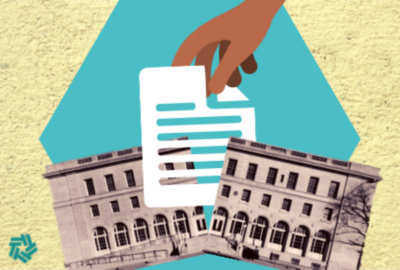From ruby slippers to first ladies’ gowns, American History Museum celebrates major milestone
2014 marks 50 years since the Smithsonian Institution opened the doors on its National Museum of American History. Federal News Radio explores the museum's...
Frank A. Taylor, the founding director of the Smithsonian Institution’s National Museum of American History, recalled the night before the museum’s opening in 1964 as one of the happiest moments of his life.
The building, which was then called the National Museum of History and Technology (NMHT), was a shining new structure on the National Mall in Washington, D.C. Taylor had asked his boss, Secretary of the Smithsonian Leonard Carmichael, if he could have a staff party before the official opening.
“He was a little reluctant about this because he thought this might dilute or diminish the importance of the opening and, of course, there was to be a very distinguished gathering for the opening,” Taylor told James C. Bradley in 1974 (Smithsonian Institution Archives: Box 9512, Oral History Project Interviews) . “I said, ‘Well, I would like to do it before the opening because I feel that the staff from the topmost level to the lowest level have worked very hard at this. I’d like to have them and their families come down to see the building, so that the wives and children could see what their husbands and fathers had been doing.'”
Carmichael acquiesced and the party was approved.
“After having worked in what was a rather cold building, putting in exhibits, it all came to life that night with the staff,” Taylor said.
Workers brought their families and cafeteria employees from the Marriott Corporation provided refreshments, giving them a chance to test out their new service facilities.
“After this little meeting in the same place and the same setting we’d arranged for the formal opening the next evening, we took this whole crowd around through the building and the exhibits — construction people, the carpenters, the painters, the laborers, and some of the guards who had been in the building were able to point out what they’d been doing to their families and explain what these exhibits were all about, how important it all was,” Taylor said. “Then we went down to the cafeteria and had cookies and cider, as I recall it, it was a nice moonlit night; you could look out the cafeteria window at the Washington Monument. Everything seemed to suddenly warm up, and it seemed like an operating organization, an operating organism, I should say, at that time.”
(Story continues after photo gallery.)

50 years from the New Frontier
2014 marks 50 years since the Smithsonian Institution opened the doors on what museum planners hoped would bring together America’s optimism about its scientific future and pride of its rich history.
“I think they were, in part, trying to capture something about the ascendancy of the U.S. in that period. It had a lot to do with the postwar mood,” said Art Molella, director of the Smithsonian’s Lemelson Center for Invention and Innovation, in an interview with Federal News Radio. “The Cold War was part of this, but it’s kind of a technological euphoria going on in that period that had to do with the space race, even after the initial disappointments with Sputnik and so forth. But it was part of that sense that America had arrived in the postwar world as a technological, scientific power player and so forth, and it’s a sense of the future coming upon us.”
That sense of scientific wonder was very much a part of The New Frontier, a phrase coined by President John F. Kennedy when he came into office. The country was still recovering from the Kennedy assassination when President Lyndon B. Johnson spoke at the museum’s Jan. 22, 1964, dedication.
“Our ancestors moved across the prairies, working to build something where nothing existed before,” Johnson said. “Yes, this museum would show to the skeptics and the doubters that what we have today was wrenched out of the earth and the sweat of pioneers who, in the face of a thousand disappointments, refused to ever abandon the American dream.”
When NMAH was first conceived, the goal was to celebrate the great technological changes that occurred in America following World War I.
“In that period, you have to recall, it was the airplane and the radio, nascent TV and all the mass production,” Molella said. “All these things were happening, new materials. All this was all figuring in. The modern technology of this so-called second industrial revolution was upon us in that period. And you get this kind of thing being announced at World’s Fairs and so on. It was a great age of technology.”
At the time, many thought the Smithsonian Institution was lagging behind the great museums of science and technology in Europe. The main model was the Deutsches Museum, the German museum in Munich.
“It started out, pretty much, as an engineering and industry museum basically to help Americans adapt to their newfound technological prowess and power,” Molella said. “How do you educate people to adapt to these new technologies? How do you grow new engineers?”
A new name and a new direction
World War II stopped the planning and fundraising momentum that had been building prior to the war, but the idea of a museum dedicated to engineering reemerged in the 1950s.
National Museum of American History
|
The Smithsonian’s technology collections were then part of the U.S. National Museum, located in the Arts and Industries Building. That collection had a significant American history component, including presidential paraphernalia, generals’ uniforms and Thomas Jefferson’s desk. The museum planners decided to bring all of that material into a new “history and technology” museum.
“It was meant to imply, in those days, that America owed its success to its technological capabilities, to its inventive capabilities in that period,” Molella said. “So, in a way, it was marrying the American democracy and all the values of America with this basic underlying technology, which was its strength of the economy and so forth. So, it represented America based on its technological abilities.”
Although the melding of history and technology seemed like a good idea at the time, museum curators began to realize it was not a perfect marriage.
“Soon after the museum opened, that kind of mindset began to change and it was understood that technology doesn’t always progress with social progress,” Molella said. “Right after this you had the Vietnam War, you had great social revolutions, you had unrest in America in that period. You had changes in academia. We had changes in how the culture thought about society and technology. So there really was an attempt to see technology vetted in a much richer social context.”
In 1980, under new director Roger Kennedy, the museum changed its name to the National Museum of American History in order to provide a greater sense of unity and make it more understandable for the public about what its mission would be.
“It was not meant to downgrade technology in spite of that,” Molella said. “It really put technology in a different kind of context.”
Fonzi’s jacket and Dorothy’s slippers: Pop culture changes the museum
Perhaps the biggest change in the direction for the NMAH grew out of “A Nation of Nations” exhibit, which was put together for the Bicentennial in 1976. The exhibit celebrated the contributions of immigrants to American culture.
“As part of that, there was a lot of popular culture put into this, sports, TV and so on, that kind of thing,” Molella said. “That kind of initiated it, but it didn’t really become large, to my knowledge, until the ’80s, then the sort of TV sets and settings started to come in with much more regularity, to the point that we became known for that.”
The museum became home to pop culture items such as Fonzi’s leather jacket from “Happy Days,” Julia Child’s TV kitchen and Dorothy’s ruby slippers from “The Wizard of Oz.”
Although such pop culture elements remain a big draw for the museum, one of the most popular ongoing exhibits has a historical context — “The First Ladies.”

“I think there’s a sense of royalty about this kind of thing that we all succumb to, don’t we?” Molella said. “People do come to see museums, yes, to see what ordinary life was like, but they also want to see what life was like for great Americans as well. I think there’s an element of women’s history that has been absent from a lot of the museum that’s there. And, I think, costume is always a perennial favorite for people as well. But I think there’s a sense of people want to see the great as well as the ordinary when they come to a museum.”
Telling history through objects is the bread and of butter of the museum and what makes it a different experience for visitors than watching a movie or reading a history book.
“There is still this craving for something tangible with a past, a very direct connection with the past,” Molella said. “It has to do with artifacts that people themselves have and can relate to and then they can use these artifacts or costume or whatever to relate to people in a palpable way. You don’t get that from our increasing virtual world that we face.”
The museum only has about 3 percent of its holdings on display at any given time. This wealth of material to draw from can sometimes present a challenge to the curator in deciding what objects to put on display. Fundraising plays a part in the decision process, as well as preservation concerns.
“There’s always a tension between our place’s mission to preserve things for posterity and for getting them on display,” he said. “It’s always there. Things are more or less vulnerable to environmental kinds of things when they’re on display. Paper kinds of things can’t be up for more than a couple of months without being rotated very quickly.”
The museum will be celebrate its 50th anniversary with an exhibit that will open to the public on May 16. It will feature a short documentary called “Making a Modern Museum — Celebrating the 50th Anniversary of NMAH.” Molella has also written a blog post about the anniversary.
“What I really value about this museum is the thrill of knowledge,” he said. “I think when people come in here, that’s what really excites them to understand what they’re seeing here is maybe not the final truth of things, but it is something that is researched to the best of our abilities. I think that that kind of foundation is very important for us and one that’s been with the Smithsonian since its origins in the 1840s.”
RELATED STORIES:
State Department opens doors to historic treasure trove
ICE officials present Holocaust Museum with lost Nazi diary
Cool Jobs: The Spacesuit Conservator
Copyright © 2024 Federal News Network. All rights reserved. This website is not intended for users located within the European Economic Area.
Michael O’Connell is senior digital editor of Federal News Network optimizing content for the best user experience. Follow @moconnellWFED
Follow @moconnellWFED






